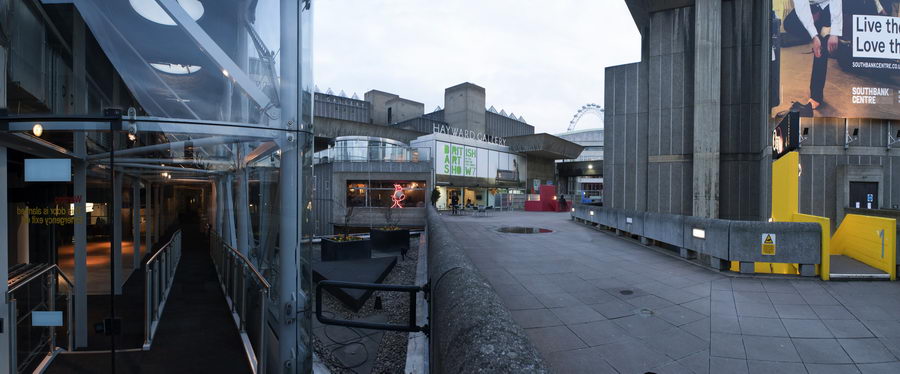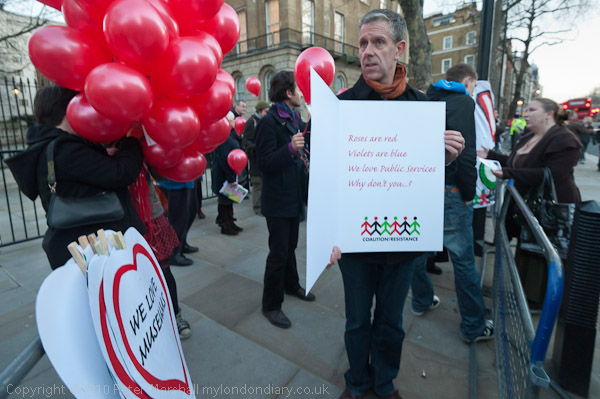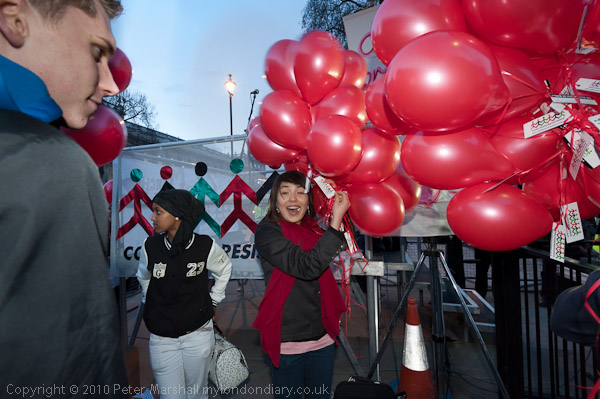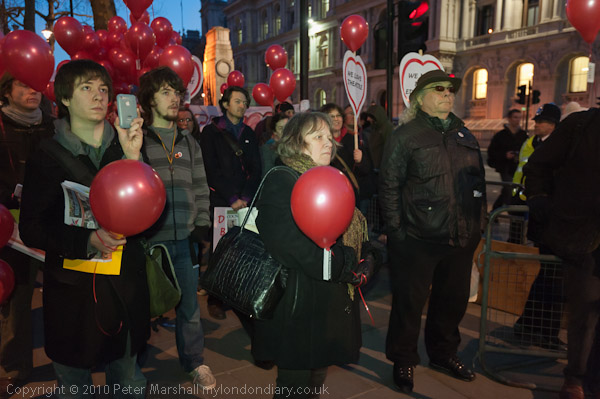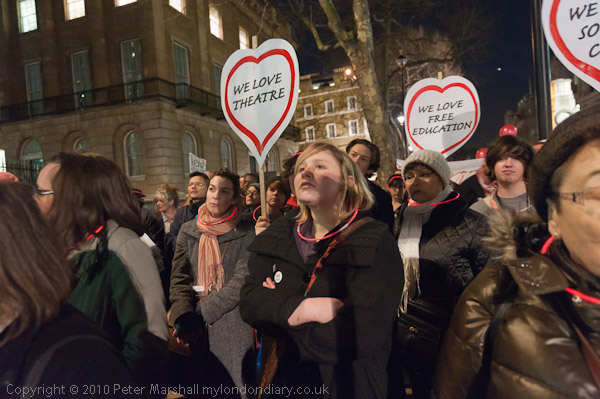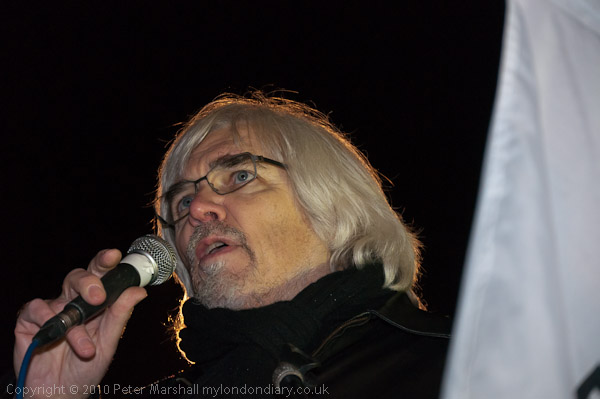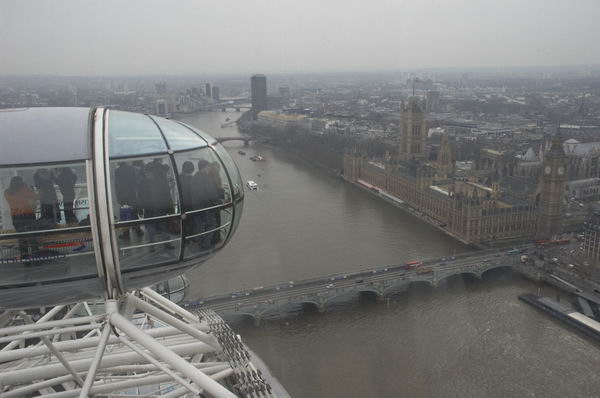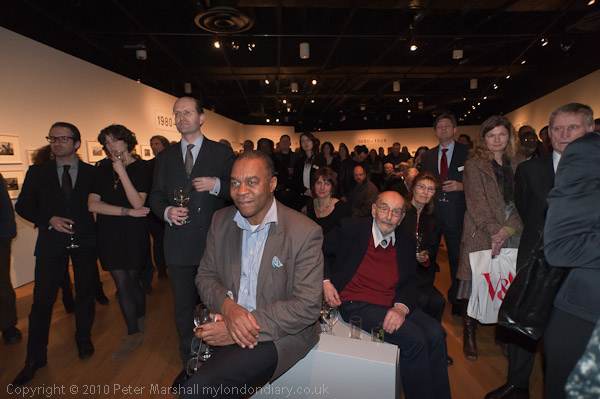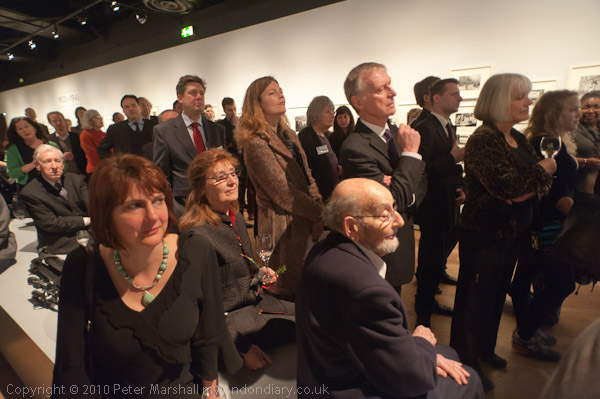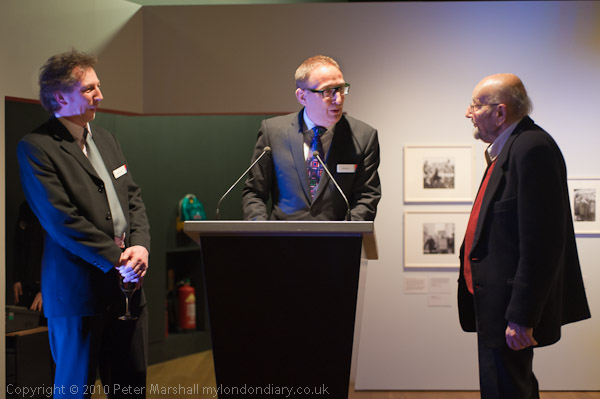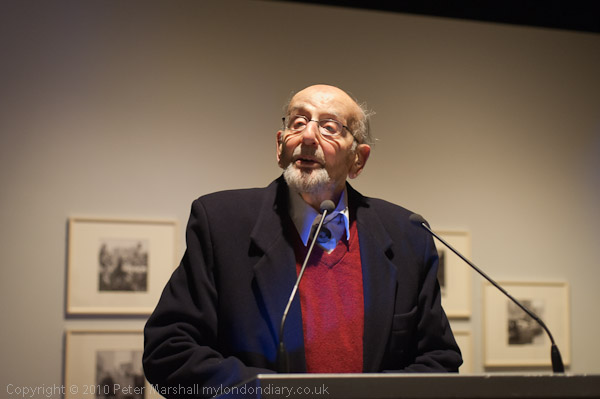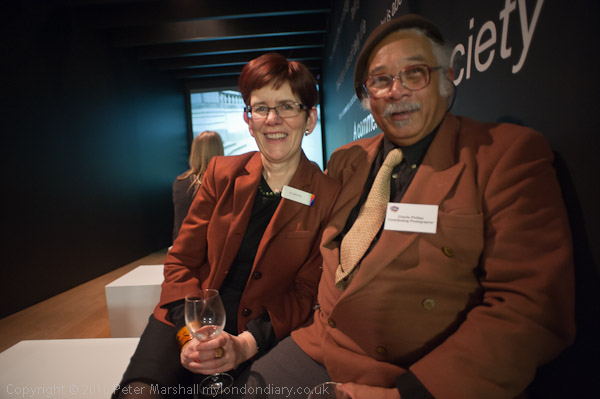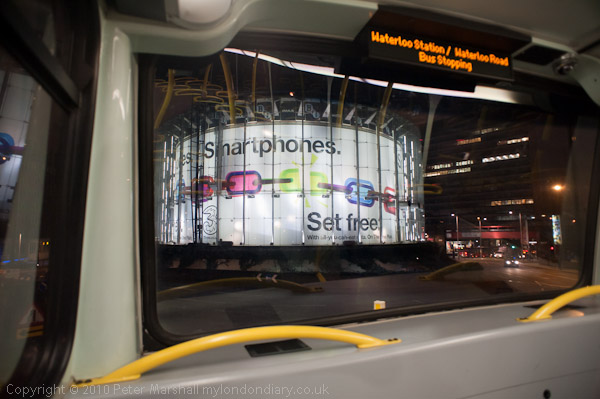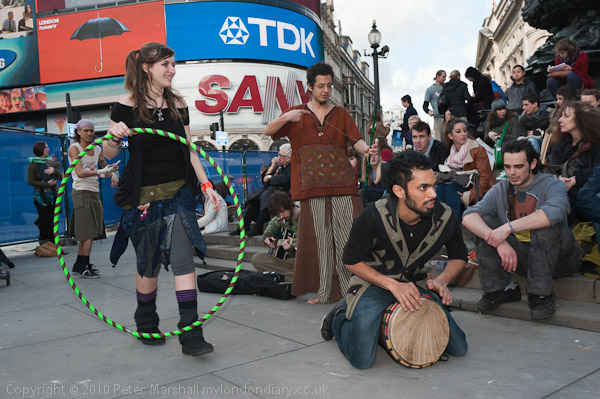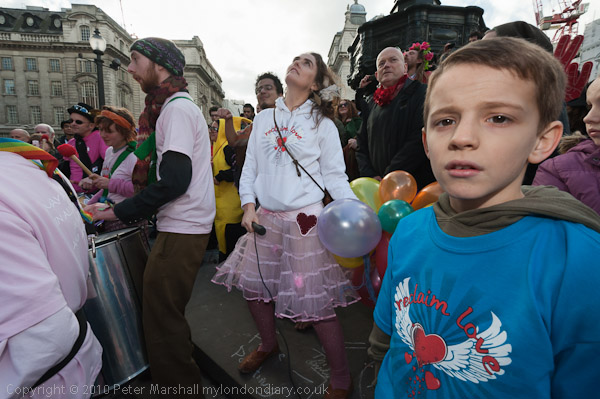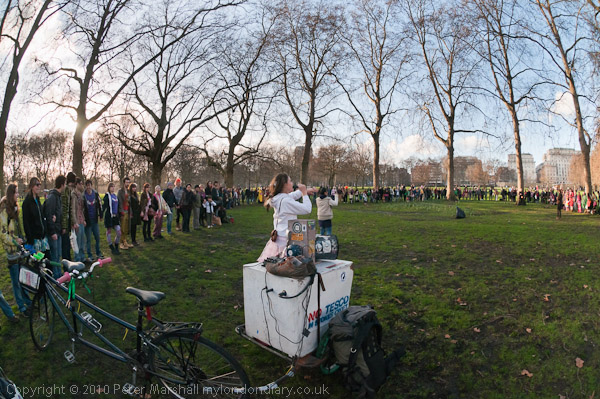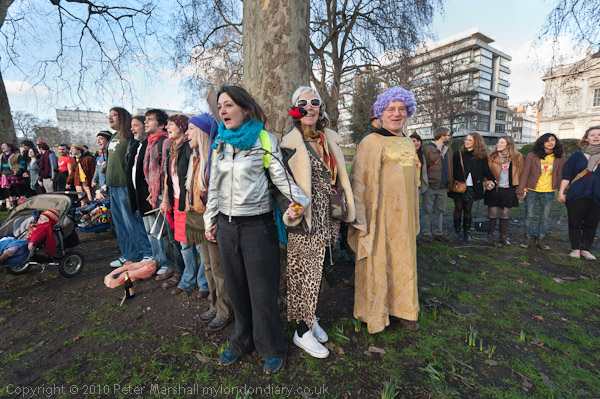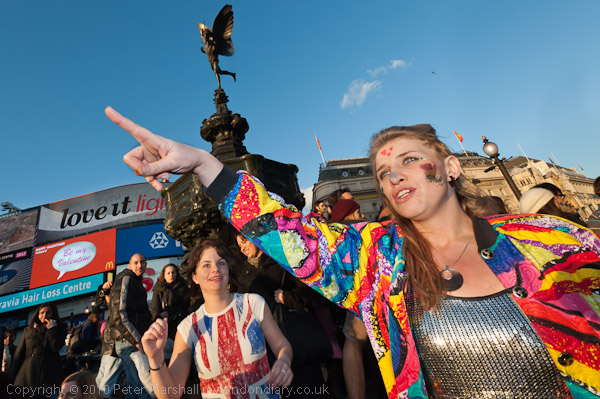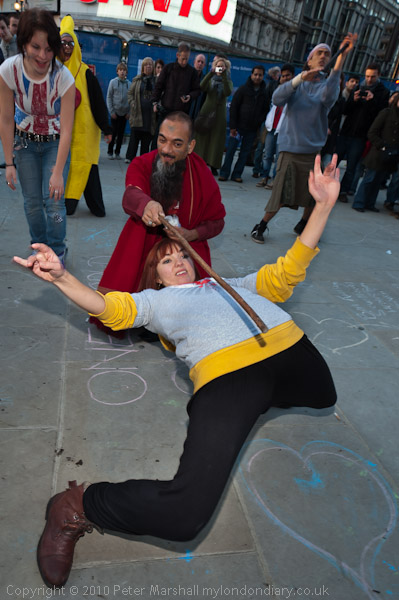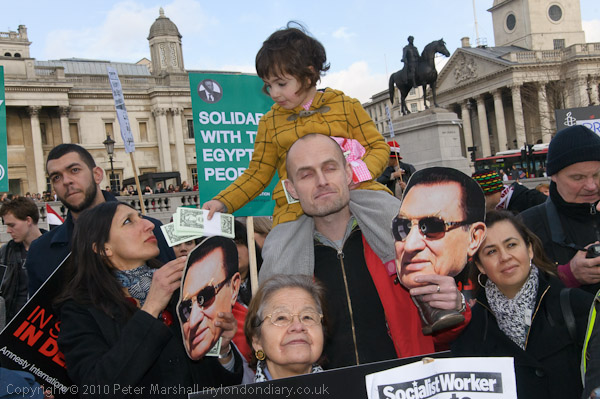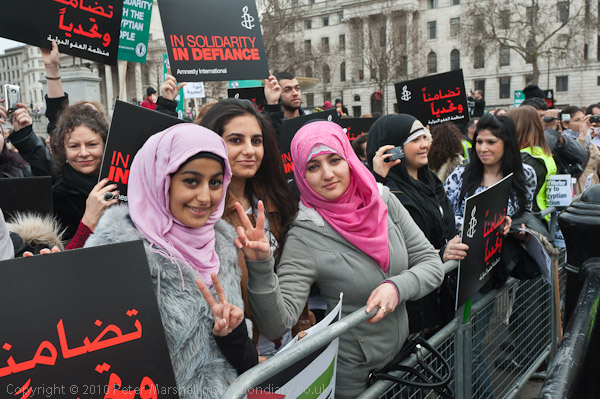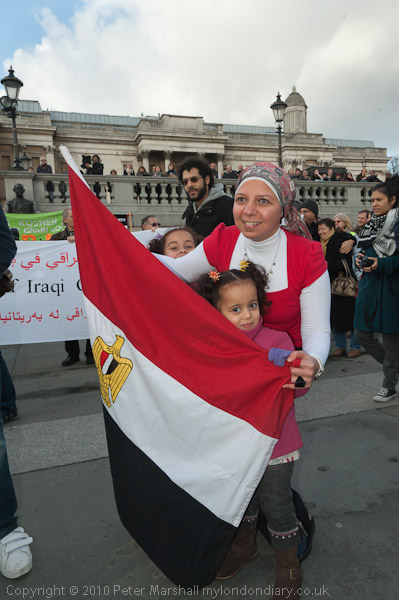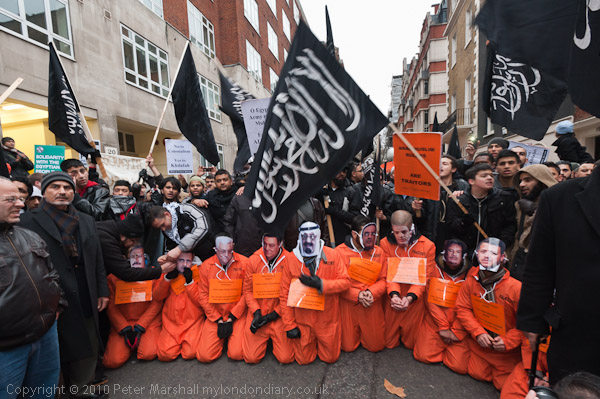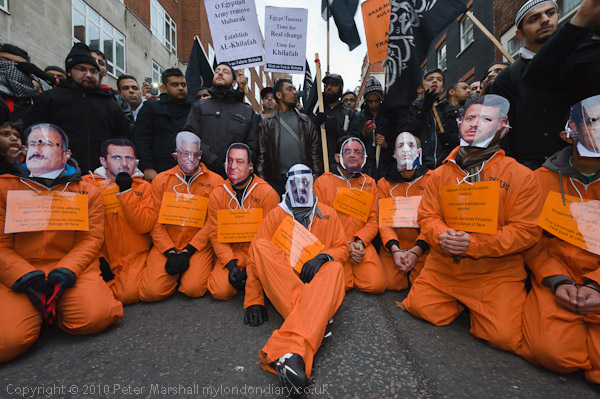6 Billion Ways is an free event next Saturday in Bethnal Green that explores through “discussion, ideas, action and the arts” the resistance around the world to climate change, financial crisis, and other problems that have as their basis the greed of the rich.
As their web site says:
“people are fighting back. From the grassroots to the global, communities and movements are imagining and creating a world where people and planet come before profit, and democracy trumps corporate power.”
I was delighted to be invited to show my work documenting some of that fight-back over the years through events in London, many of which reach out across the world, through my pictures on My London Diary.
At the moment it’s a rush to try and select the pictures, with so much to choose from – more than 50,000 pictures from something around a thousand events over the years that My London Diary covers.

Jubilee 2000 final event, Westminster, Dec 2000
The pictures on it start in 1999, and among the events I photographed that year were several, mainly organised by Jubilee 2000, calling for debt relief, as well as Kurds calling for the release of their national leader, Abdullah Öcalan, a solidarity protest with the people of East Timor and a protest calling for NATO to get out of the Balkans.

Westminster, June 1999
Over the years I’ve photographed the big national protests in London, but also many smaller events, some about local issues – for example against the closure of Queens Market in Upton Park, local protests about what are really national issues, including recent anti-cuts protests and many also protests about events in other countries.
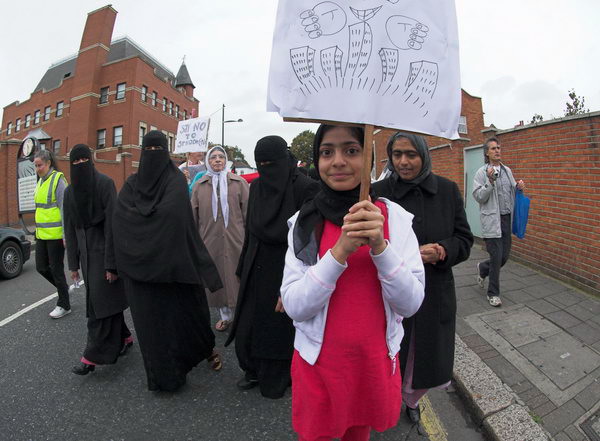
Save Queen’s Market: Women’s March, Oct 2006
Walking around London the various blue and other plaques on many of our buildings reveal the long tradition of this country upholding political freedom and giving refuge to those who would lead the liberation of their own countries across the world. It is a record somewhat tarnished in recent years, but it still seems true that protests take place in London about events around the world, and that many people from around the world who have had to flee their own countries protest here.
In a post that should appear shortly on the 6 Billion Ways blog I wrote:
So far in 2011 as well as local marches against the cuts in Islington and Hackney, UK Uncut actions, students protesting the loss of EMA, protests against unfair testing for disabled benefits, against privatisation of Royal Mail, calling for the release of Shaker Aamer from Guantanamo, I’ve also covered protests calling for freedom for Kashmir and Khalistan, opposing cuts in the BBC World Service, solidarity with the Libyan, Tunisian and Egyptian revolutions and more – including a pillow fight against unsuitable high-rise development in Walthamstow.
Of course only a relatively small number – perhaps around 50 – of my pictures will be shown on the projection loop at Rich Mix during 6 Billion Ways and you can see so much more on the web.
